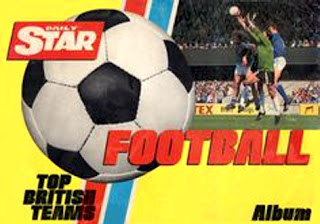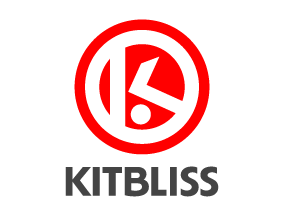In 1981, one of the greatest films in Scottish movie history was released.
Gregory's Girl was a story that could have been about any one of us; a tale of growing up, going to school, playing football and falling in love with someone without ever fully knowing how important any of it was.
Written and directed by Bill Forsyth and starring John Gordon Sinclair as Gregory Underwood, the film brings to mind memories of younger days, our insecurities and inexperience, of living life in the moment and understanding who we are as individuals. And if none of that struck a chord, there were also the sequences where football played a strong part.
If a discussion about football nostalgia appeals to you more than Dee Hepburn or Claire Grogan, you've come to the right place (although decency and integrity prohibits us from having an online vote about which of the two female stars you liked best).
Gregory's Girl is littered with football references and imagery, so if you needed a reminder of where the memories lie, here's a brief selection.
1. School football
Shortly after the opening sequence, we're taken to a secondary school in the Scottish new town of Cumbernauld. There we see a number of football matches taking place involving school children wearing kits of many colours.
They look basic and a little old-fashioned for 1981, but that's how it often was back then. Hands up who played for their school football team in a kit that seemed older than they were? Yeah, me too...
2. Partick Thistle #1
If any one football club had a bigger influence on this film than any other, it was Partick Thistle. Dee Hepburn honed her football-playing skills at the Firhill club before filming began, and here we see them represented in the form of a couple of players wearing Partick's kit from the 1975-76 season.
In the foreground, we get our first sight of Gregory himself, wearing a natty Umbro shirt in blue that, to the best of anyone's knowledge, didn't belong to any particular league club at the time. Judging by the styling, however, it was a new piece of Umbro teamwear at the time, unlike the yellow Umbro goalkeeper top worn by Rab Buchanan who played the part of Andy.
3. Balls
Gregory turns out to be anything but the hotshot goalscorer his team coach, Mr Menzies, had in mind, so a series of trials are organised to find someone more suitable.
Back out on the gravel training pitches in the school grounds, a number of willing (and not-so-willing) participants are put through their paces. Each of them has a Mitre football that looks more designed for the rough playing surface beneath their feet rather than the luxurious turf of Hampden Park, but there again we see the harsh realities of school football.
Actually, come to think of it, those footballs look familiar.
Where have we seen those before?
4. Kits of all kinds
The boys that are lined up for action are wearing a colourful array of shirts, some basic and some altogether more in tune with modern football.
In the picture on the left, you can see someone wearing the same sort of yellow top that would have been
worn by Alan Rough while playing in goal for Scotland around the same time. Ironically, Rough played his club football for Partick Thistle when the film was made.
At the other end of the desirability scale, we see the kid on the right wearing what seems to be a cheap imitation of a Barcelona shirt.
Note the Umbro diamond logo on the yellow shirt, though. Spotting a theme developing here?
5. Umbro again
Yes, there's more Umbro apparel to marvel at, this time in the form of a tracksuit worn by Dorothy (Dee Hepburn).
Arriving late for the trial, she's convinced she's better than most of the boys and demands a place alongside them. After a lengthy discussion with Menzies (Jake D'Arcy), she finally persuades him to see sense and before long is dribbling the ball around the training cones with all the easy grace of Kenny Dalglish in his prime.
As for that tracksuit, what else can we say except 'Bella bella'?
6. Teamwear-a-go-go
The pale blue shirt we saw being worn by John Gordon Sinclair earlier looked distinctly Manchester City-esque. It'd be nice to think this was once worn by the likes of Paul Power or Kazimierz Deyna, but clearly it wasn't.
More believable, perhaps, is the other Umbro kit that crops up in the film which looks a dead ringer for a Manchester City away kit from the same era. Sadly, this isn't true either, but it looks pretty good all the same - even with those old Partick Thistle socks.
7. Umbro yellow
While Dorothy struts her stuff in Gregory's old outfield position, Gregory himself ends up in goal and clearly he's not up to the standard of the fella we saw earlier. It's a plain yellow goalie top this time (like Andy's earlier) - no Scotland badge and no Umbro diamonds down the sleeves... but there is the ever-present diamond logo in its usual top-left position.
Also worth noting are the cheapo goalie gloves further underlining Gregory's lowly status between the sticks. It's probably a fair bet that those green patches are made of plastic and are consequently of no use to man nor beast. (See also '
Catalogue of Eras'.)
8. Not Dundee
Later in the film, Dorothy, ever conscientious about improving her footballing technique, asks Gregory to help her out with a lunchtime training session.
Forced into goal to provide the most minimal of opposition, he this time wears a short-sleeved Umbro shirt (what else?) in navy blue with white sleeves and red trim.
On first sight, I thought this modern-looking shirt might have been worn once by Dundee, but clearly my imagination was playing tricks on me. The Dees never wore this shirt, but maybe another team did? If you know, drop me a line.
Looks nice though, doesn't it?
9. Do the Tango
If you're going to pick the ball out of the net with as much regularity as Gregory, you might as well make it a good one, and Dorothy clearly knows good balls when she sees them. That's why she's gone for one of the all-time classics - an Adidas Tango.
That's right, you read that correctly... That's Adidas, not Umbro.
And what a fine ball it was. Introduced in time for the 1978 World Cup as the Adidas Tango River Plate, it was well established when
Gregory's Girl was released and would be seen in reinvented form at countless World Cups thereafter. Mind you, the one Dee Hepburn's holding is probably a cheap version, but even so...
10. Partick Thistle #2
And so to the final football reference of the film which provides one last mention of Partick Thistle Football Club (well, almost).
Here we see Gregory making some noise on his drum kit, releasing some pent-up nerves ahead of a date with the object of his affections, Dorothy. Standing in the doorway to his bedroom is Madeleine (never Maddy), his younger sister, who's on hand once again to dispense some much-needed wisdom about the opposite sex.
Pinned on the wall behind Gregory, we see a Partick Thistle scarf, confirming the identity of the other love in his life - his favourite football club, located 14 miles away in Glasgow.
From here until the end of the film, football takes a back seat as Gregory attempts to woo the girl of his dreams. For those of you that haven't seen the movie, I won't spoil things by telling you whether he gets his girl or not. Instead, lets take solace from the closing credits which confirm that Partick Thistle Football Club and Umbro International were both integral to the making of the film, and that the named 'Football Coach' was Donnie McKinnon, one-time Partick Thistle captain.
And that's
Gregory's Girl. A fine British movie, and one that's now available to buy on
DVD and
Blu-Ray via Amazon.co.uk. Buy it and enjoy it (especially if you like a bit of football nostalgia).
-- Chris Oakley
All images featured on this post copyright their original owners and used for the purposes of review and illustration. No attempt at superseding original copyright has been made or should be inferred.
















































